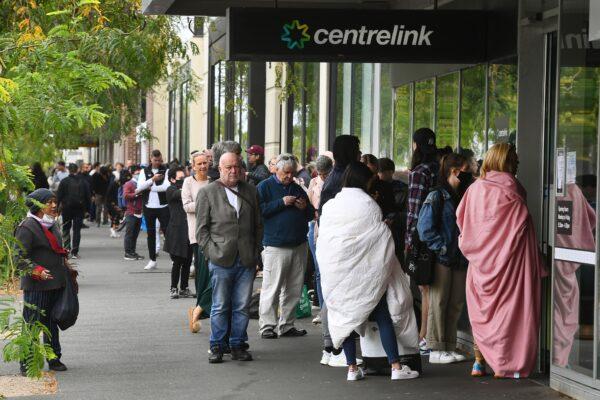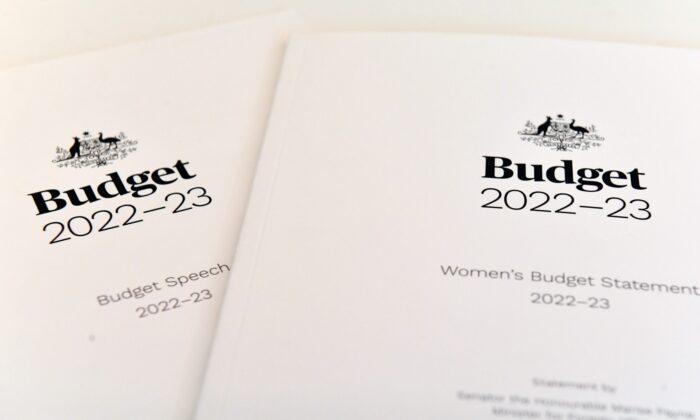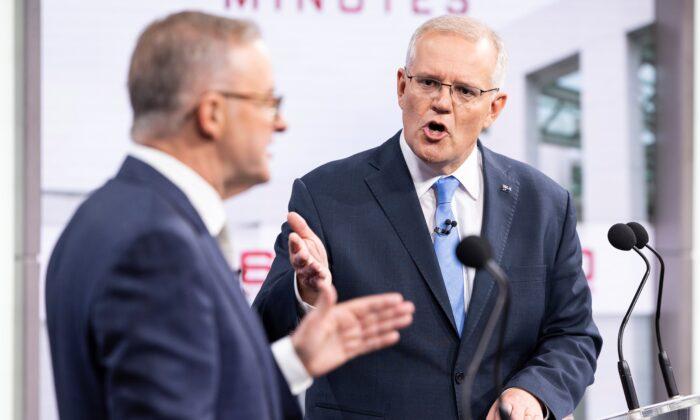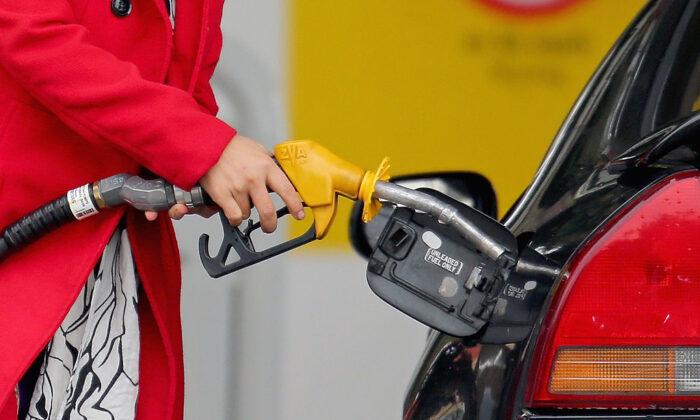The most striking feature of Tuesday’s 2022-23 federal budget is how well the Australian economy is performing.
Whereas two years ago we were facing a catastrophe, the outlook now is rosy and enviable. We have passed out of the pandemic storm into calm waters very quickly.
The unemployment rate is heading below four percent—its lowest level since 1974. GDP is now well-above pre-pandemic levels, in contrast to most other leading economies, and poised for steady growth.
A stronger economy and high commodity prices are boosting government revenues. So gross debt peaks at 45 percent of GDP instead of the 52 percent expected last year.
The largest worry is inflation; which is high and rising. However, this reflects high international commodity prices and pandemic-induced shortages. As those disruptions pass, the outlook is for inflation to return to within the Reserve Bank of Australia’s target range of two to three percent.
In this “Goldilocks” (not too hot, not too cold) economy, one might expect the government to maintain a “steady as she goes” stance.
To a large extent, that is what we saw.
At face value, government spending has fallen dramatically—from 32 percent of GDP in 2020-21 to 28 percent this year, with further modest reductions projected. This is one of the largest reductions in spending on record, outside of post-war demobilisations.
This reduction reflects the passing of emergency pandemic relief, such as the JobKeeper, HomeBuilder, and other programs. Although there were vocal calls for the extension of these programs, the government allowed them to expire on schedule.
Incidentally, this experience contradicts American economist Milton Friedman’s famous quip “nothing is so permanent as a temporary government program.”

As noted above, the rising cost of living is a worry, even if expected to be temporary. Indeed, this seems to be the issue at the top of many voters’ concerns as we approach the federal election expected in May.
To allay those concerns, the government allocated a sizeable fraction of its revenue windfall to “cost of living relief.” This will see ten million low- and middle-income taxpayers get an extra $420 (US$315) this July, six million pensioners and concession cardholders get a $250 payment in April, and petrol tax reduced by 22 cents a litre for six months.
All these are one-off payments, involve no ongoing charge to the budget. That presumably gains the government support from short-sighted voters, while keeping the longer-term fiscal strategy intact.
As a rule, one-off grants are a bad policy. If the government is cutting taxes (which it should be) it is better to reduce rates than give lump-sum grants. Cutting marginal tax rates boosts incentives to work and invest, whereas grants, if anything, do the opposite.
That said, one-off grants are by nature temporary, and do not create an expectation of further grants. So their longer-run fiscal cost is less.
Likewise, the cut in petrol tax has unattractive features. If the government bears the burden of higher prices, sellers are freed from market discipline and will find it easier to raise prices. And it fails to encourage conservation at a time when petroleum is unusually scarce. But if the cut is only for six months, such disadvantages will be temporary.
On the spending side, the government has sought to mollify community complaints. Over the next five years, there is an extra $1 billion (US$750 million) for victims of domestic violence, an extra $2 billion for pharmaceutical benefits, and an extra $2 billion for flood relief.
Overall, the government has retained most of its revenue windfall, while spreading the rest in a way that seems intended to reduce community controversy.
If there is a loser from this strategy it is probably homeowners. The extra government outlays will add to total demand and boost inflation further—though with a temporary offset in lower petrol prices. This will lead the Reserve Bank to start increasing interest rates earlier than otherwise.
Given the size of mortgages, small increases in rates are enough to swamp the budget’s cost of living measures. An extra percentage point on the average $600,000 (US$450,000) mortgage increases annual interest payments by $6,000. The government is hoping that, when that comes, voters will not hold it responsible.
The budget does little to address long-term problems like productivity growth, housing affordability or economic opportunity. It would not be described as visionary, innovative or long-sighted.
The government’s calculation is that this budget is what the voters want. We find out whether that judgement is correct in May.




Friends Read Free